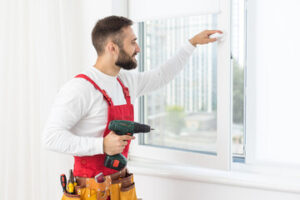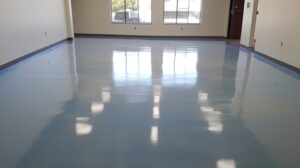A proper window installation maximizes energy efficiency, minimizes moisture infiltration and contributes to low home energy bills. To start, contractors apply a bead of caulk around the sill and casing.

They then install shims to keep the window firmly in place. They also use a level to check that the window is square and level. Visit https://www.windowinstallationwaukesha.com/ to learn more.
Windows are an important feature in the home that offer protection from the elements. They can add beauty and value, and should be maintained to ensure proper function and durability. Window installation requires specialized tools and knowledge, making it an excellent job for professionals. However, homeowners can save money by performing some of the work themselves.
A window is composed of a frame, sill and sash. The sash is the sliding part of the window, which can open and close. The frame is the part of the window that holds the sash in place and provides support for the glass. The frame is typically made of wood, aluminum or vinyl. Vinyl and metal frames are generally the least expensive. Wood frames are more expensive, but they can be stained and painted for a custom look.
When installing a new window, the contractor will first prepare the opening. They will make sure the opening is sized correctly to accommodate the window and allow room for squaring, shimming, and insulating. They will then cover the opening with sheathing material, such as Oriented Strand Board (OSB) or plywood. They will then fasten the framing lumber to the sheathing with nails or screws. They may also insulate the frame, depending on climate and energy efficiency requirements.
Once the framing is secure, they will install a sill. The sill is the horizontal strip that runs along the bottom of the frame. It should be level and flush with the exterior wall to prevent water and debris from collecting in the window track. It is also common to include weep holes in the sill, which are open to allow precipitation to drain out of the track.
Next, they will remove any old hardware from the sashes and frame. This can include sash weights, springs, and metal channels. They can be removed by cutting the cords or unscrewing the clips. If the window is old enough, they will also remove the sash rails. The top and bottom rails of the sash are called sash rails. In double-hung windows, there are two sash rails each for the top and bottom of the window.
Glass
In most homes, the glass of a window plays a major role in the energy efficiency and aesthetics of your home. Choosing the right glass can lower your energy costs, help your home retain heat during winter, and keep out noise. Glass windows and doors are also a great way to increase the value of your home by improving its curb appeal.
The process of installing a glass window involves many complex steps and requires professional attention to detail. A window that is improperly installed may crack or break and may not be able to properly insulate your home. In addition, if the steel frame is damaged, it can lead to air leaks and other issues that affect your home’s safety.
Before you install the new window, remove the old one and prep the area. Then, clean the window frame, making sure that there are no smudges or dirt. Apply a thin coat of primer or shellac to the exposed channel on the frame to protect it from water and prevent moisture damage. Let it dry completely before you continue.
Next, prepare the window by measuring the interior dimensions of the frame and cutting the glass to size. When cutting the glass, be sure to add 1/8 inch to your measurements to account for expansion. This will ensure that the glass is snug in the frame and will not crack in the future.
Once the glass is cut to size, place it in the window frame. Press it in gently to ensure that it is seated correctly. Then, using a level and a caulking gun, seal the perimeter of the window to the frame and make sure that there is no gap between the glass and the frame.
Finally, install a new screen and test the window to ensure that it opens and closes smoothly. Be sure to wash the window regularly with a nonabrasive cleaner and wipe it down with a soft cloth to avoid scratches. It is also important to check the weep holes on a regular basis to make sure that they are not blocked and that water can drain freely from the window.
Weather Seal
Whether your window is a “double-hung” (sash that moves up and down) or a casement type (which has a lever or crank to open inward or outward from a frame), a good weather seal is essential for keeping energy bills low. If you have a window that’s not properly weather-sealed, you might notice drafts around the frame, condensation on the glass or walls, and even mildew growth. The most important step in preventing air leaks and water infiltration is to inspect your windows regularly. A candle test or a simple visual inspection can help you identify any potential problems early.
Once you’ve made any necessary repairs, it’s time to weather-seal your windows. First, clean the edge of each window with soap and water to remove any dirt or debris that could interfere with a new seal. Next, gently prise the old seal away, starting at one end. Be sure to keep this piece – it can help you measure up your replacement uPVC window seals and make sure they are the correct length.
If you’re replacing the old caulking, choose a silicone-based product that’s paintable. Silicone lasts longer than latex and stands up to direct sunlight and extreme temperatures better. Apply the caulking in a long, smooth stroke to avoid leaving gaps or smears. When finished, use a caulk finisher or a dampened finger to press the bead into the gap, giving it a clean, finished look.
There are several different types of weather stripping available for windows, depending on the size and material of your window frames and doors. Felt is a traditional choice that’s easy to apply but doesn’t offer as strong a seal or durability as other options. Tubular vinyl gaskets are effective at sealing larger gaps and are available in a wide range of colors to blend with your home’s décor. Closed-cell foam attached to wood or metal strips is also an option that prevents drafts and is relatively durable.
A V-shaped tension seal, often called a v-strip, is ideal for the side channels of double-hung windows or tight-fitting doorways. It springs open when compressed to create an airtight seal, but it can be more difficult to install than foam tape.
Installation
Window installation is often done from inside your home to minimize the impact on your home’s exterior. To do this, your contractor will remove the interior trim or casing around the existing window and then fit the new replacement window into the opening from the inside. This method is great for improving energy efficiency or addressing issues with current windows without replacing them completely.
To prepare for window replacement, the installer will clear away any debris from the opening and then remove any nails or screws holding the old frame in place. They’ll also clean the area to make sure it’s free of dust and dirt. If the window is being installed in a wall that’s being built or renovated, they may need to create or modify an opening for the new window, which can require drywall and other materials.
After the new window is positioned, the installer will use a level to make sure it lines up with the opening and that the sashes are even with each other. They’ll apply shims to the meeting rails and to other areas as needed to ensure the window is positioned correctly in the opening. They’ll also apply a bead of caulk around the perimeter of the window to seal it in place.
Depending on the type of window, your installer might install insulation in the frame or casing before sealing it to the house. They’ll typically use low-expanding foam or fiberglass insulation to fill the gap between the frame and the casing, which helps promote energy efficiency by reducing heat transfer and air leaks.
Before the foam expands, they’ll carefully cut and shape it to match the shape of the window. Once they’re satisfied, they’ll use a caulking gun to apply a bead of caulk along the edge of the nailing fin and around the entire window. They’ll then carefully remove any excess caulk.
After the installation is complete, your installer will do a walkthrough with you to make sure that the windows are installed properly and operate correctly. They’ll also answer any questions that you might have.
